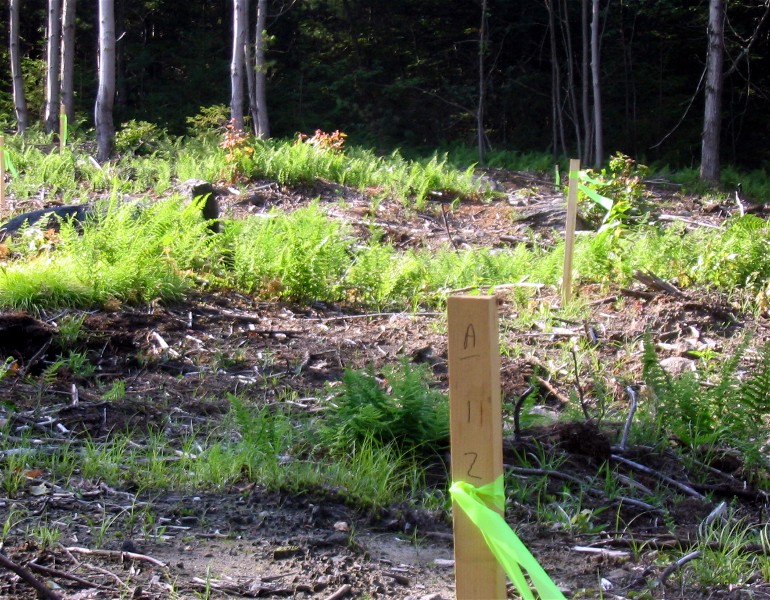
Jan and John Maggs Antiques
Our Ashfield Odyssey
Part 3: Promise of Spring -- May to October 2005 -- p. 4
We prepared the plans for the barn and shop we planned to build near our future house and brought them to the building inspector. We learned then that Ashfield required the plans to be approved by the Conservation Commission. Mildly disappointed by this inconvenience, we spoke with the chairman of the commission and left him a copy of our documentation. The next morning he asked us to meet with him; there was "a little problem."
The "problem" was a designated wetlands area near our proposed building site. Nothing we had seen suggested to us that there would be an issue, but there it was, staring at us on a map we'd never had access to. We were asked to hire a wetlands scientist to determine whether or not wetlands legislation applied to our project.
The consultant did, indeed, find a small area of wetlands vegetation and soil conditions near our building site. Consequently, we were asked to hire a surveyor to plot the wetland and its buffer zone on our site plan. We proposed a method of doing the necessary survey work ourselves and were given permission.

After three days of walking through dense vegetation, swatting flies, mosquitoes, and black flies, and perspiring profusely, we had marked the edge of the buffer zone. Only then did we discover that we had inadvertently drilled our well fourteen feet within it.
The consequent public hearing did not occur until August 10. The Commission determined that there was no significant finding, but the state had two weeks to appeal the decision. Understandably, during the three months between the discovery of the wetlands and final approval of our building permit, no contractor would talk with us about our excavation and foundation needs. As a result, the wetlands delay had cost us most of the summer.